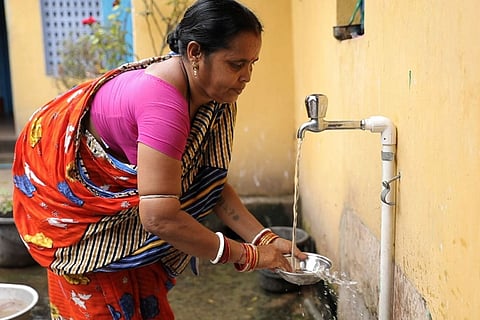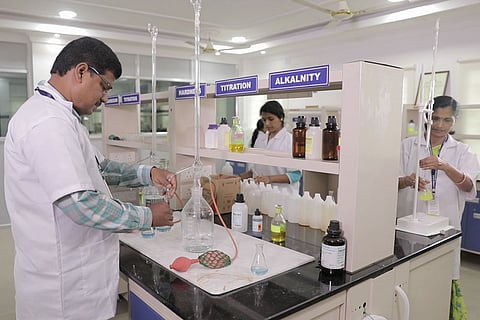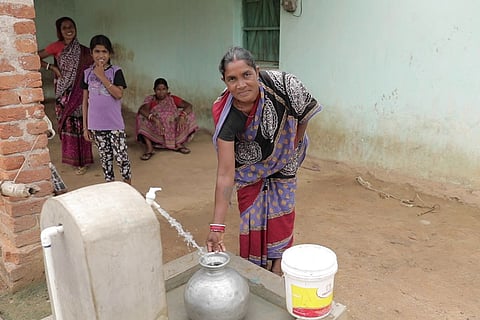Odisha’s Rural Turnaround: Where Water Meets Empowerment
From universal tap water access to self-reliant panchayats, Odisha is redefining grassroots development with scale, strategy, and sustainability. Over the past year, the state has undergone a quiet but profound shift in its approach to rural development.
From universal tap water access to self-reliant panchayats, Odisha is redefining grassroots development with scale, strategy, and sustainability. Over the past year, the state has undergone a quiet but profound shift in its approach to rural development.
Under the Mohan Charan Majhi government, the focus has moved towards strengthening grassroots institutions and ensuring equitable access to essential services.
Two pillars are driving this transformation: revitalising Panchayati Raj Institutions (PRIs) and delivering clean, piped water to every household.
The state’s flagship initiative, Bikashita Gaon, Bikashita Odisha, embodies this agenda, with ₹1,000 crore earmarked for FY 2024–25 and ₹2,000 crore set aside for the following year.
Of this, 35 per cent is being channelled into road connectivity, unlocking access for remote communities and enabling last-mile service delivery.

The Water Dividend
Odisha is on a mission to achieve 100 per cent Functional Household Tap Connections (FHTCs) by December 2026.
With over three lakh connections already operational, Odisha’s community-centric model is proving to be a gamechanger. Village Water and Sanitation Committees (VWSCs) are actively involved in monitoring water quality, maintaining infrastructure, and addressing grievances and thus fostering local accountability.
The tribal areas and drought-prone districts are receiving special attention, as conventional infrastructure often struggles in these areas. In these regions, 3,107 decentralised solar-powered water schemes have been deployed, ensuring consistent supply even where the grid does not reach.
Simultaneously, 207 Mega Rural Piped Water Supply Projects, that involve using surface water to serve multiple habitations, are underway. Sixteen are already functional, 82 are nearing completion, and the rest are expected to be delivered by 2026, aligned with the Jal Jeevan Mission.
In hilly and remote areas, where piped systems may take longer to implement, a revised policy now mandates one tube well for every 70 individuals. This is to ensure interim relief and resilience during disasters when piped systems might falter.

Finance, Infrastructure, and Integration
The BASUDHA scheme, with an allocation of ₹1,500 crore, complements these efforts, targeting geographies with technical limitations. It funds command centres, energy costs, and water management innovation to enable reach and resilience.
An important component of this approach is the integration across schemes. The ₹7,550 crore Antyodaya Gruha Yojana aims to construct over 5 lakh pucca homes for the state’s most vulnerable population within three years. These include widows, persons with disabilities, and the chronically ill.
These homes are synchronised with piped water and toilets, ensuring that basic amenities are delivered as a package. Over 60,000 homes were sanctioned in a single day on 30 March 2025.
Panchayats taking the Lead
Odisha’s Panchayats are emerging as centres of self-reliance and innovation.
The Hatbhadra Gram Panchayat in Mayurbhanj, under a woman Sarpanch, raised ₹79.24 lakh in Own Source Revenue through market fees, water charges, and pond leases. These funds helped finance infrastructure such as roads, culverts, parks, and solar lights, maintained by local youth employed by the Panchayat.
The technological adoption is equally impressive. Digital grievance systems and QR-based payment methods are enabling faster and more transparent governance at the village level.

Training remains a cornerstone of this transformation. The State Institute for Rural Development & Panchayati Raj (SIRD&PR) has trained over 3 lakh individuals through nearly 6,000 sessions, earning it national recognition two years in a row.
The Rashtriya Gram Swaraj Abhiyan (RGSA), with its 60:40 centre-state funding model, supports new Gram Panchayat and District Panchayat Resource Centre buildings, along with structured SDG-linked training modules. With ₹2 crore allocated per DPRC and ₹20 lakh per GP building, the state is investing in both infrastructure and institutional depth.
Decentralisation with Purpose
Scale, speed and sincerity mark Odisha’s rural blueprint. With its convergence of clean water, quality housing, solar energy, and democratic governance, it offers a compelling model for decentralised development.
In a scenario where top-down strategies often falter in execution, Odisha’s bottom-up approach is delivering tangible outcomes.
From remote tribal villages to digitally empowered panchayats, the state is proving that dignity, sustainability, and rural progress can go hand in hand.